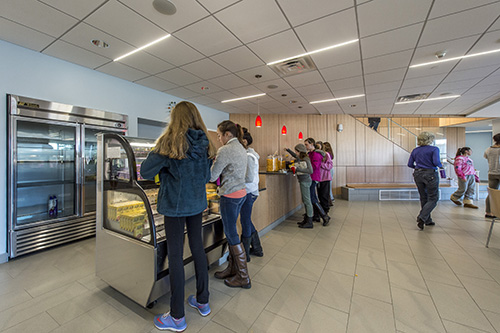Constructing Observations | The AGC Blog
Thursday, January 21, 2016
Different ground improvement techniques are used to strengthen the soil in a construction area to ready it for a new facility. In recent years, new methods have emerged that offer greater cost efficiency. This is the third article in a series we have published to help you understand ground improvement. In the first, we cover the basics of ground improvement, and in the second, we perform a deep dive into the aggregate pier ground improvement technique. In this article, we provide you an overview of the costs of ground improvement techniques.
Read more
(0) Comments
Monday, January 18, 2016
Charitable work in the Building Construction Industry over the holidays and all through-out the year
As a new member (eight months now!) to the Building Construction Industry in Massachusetts, I am continually impressed that how, for such a large industry, it feels like such a small community. The holidays were no exception with tidings of good cheer, images of employee celebrations and the incredible out pouring of charitable giving. Every day my social media feeds were inundated with the generous actions of AGC MA members and their dedicated staff. The more I thought about it the more I was compelled to look back and make a list, then reach out to a few of our members (not everyone shares) to see what their efforts included. Here is a short list of events that were happening this holiday season-and by the way, many of our members give all year long…
Read more
(0) Comments
Friday, January 15, 2016
Delivering district energy or utility infrastructure renovations on a campus without disturbing day-to-day activities is a challenging construction endeavor that needs careful attention. Students and their families dedicate valuable time and significant resources to attend a university. Having an active construction site on campus should not be an additional challenge for students and faculty. Managing a safe and compact construction site requires attention to many important project and safety details that are specific to the location of the work being performed. It is the general contractors responsibility to maintain the balance of construction productivity with the needs of the university to operate its campus as usual.
Read more
(0) Comments
Tuesday, January 12, 2016
Believing actual quantities of rock removal would be far less than the engineer’s estimate, the contractor bid a penny per cubic yard of rock removal on a water main extension project. Of course, other bid items could then be inflated and yet the contractor would – and did – remain the low overall bidder.
Read more
(0) Comments
Wednesday, January 6, 2016
The following is the first post in our series on Smart Cities.
You’re already ten minutes late for a meeting. Driving through the narrow, winding streets of the city during rush hour looking for a coveted parking space, you know your chances of success are equivalent to winning the state lottery. You slowly circle the block, bouncing over familiar potholes, as you desperately look for someone walking to a parked car. Your search has already taken 20 minutes and it will take longer because you just saw yet another lucky driver find an open spot just a few cars ahead of you. You curse out loud and tap the brake to avoid missing another golden opportunity while the drivers behind you lean on their horns.
Read more
(0) Comments
Tuesday, January 5, 2016
LEDs offer the potential for cutting general lighting energy use almost in half by 2030.
Technology is changing at a lightening pace these days affecting everything from how we work to how we live. Even the construction industry, known for its slow adoption of change, can’t resist this movement.
One area of the A/E/C industry where technology is having a drastic impact is lighting systems. Not so long ago, you’d buy a light fixture, install it, then run the electrical line to it and you’re done. It’s no longer that simple.
Read more
(0) Comments






